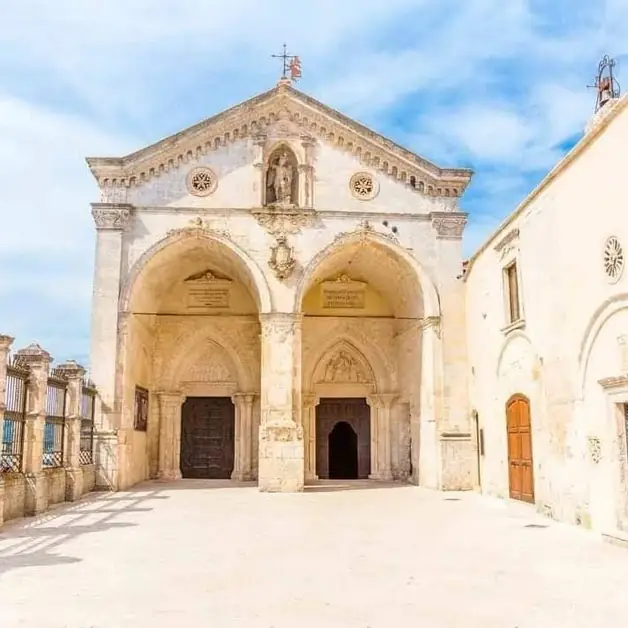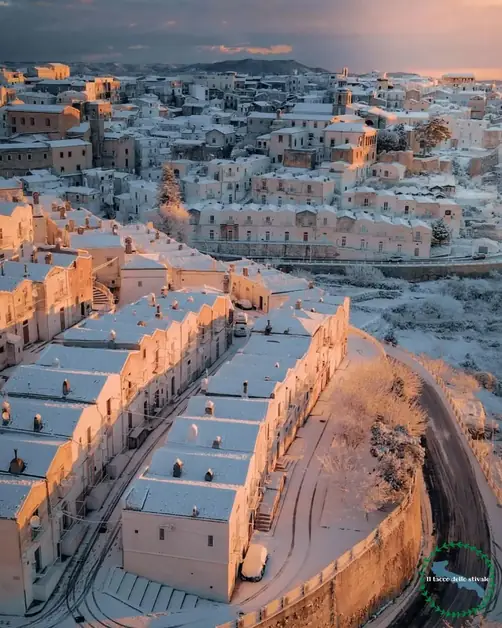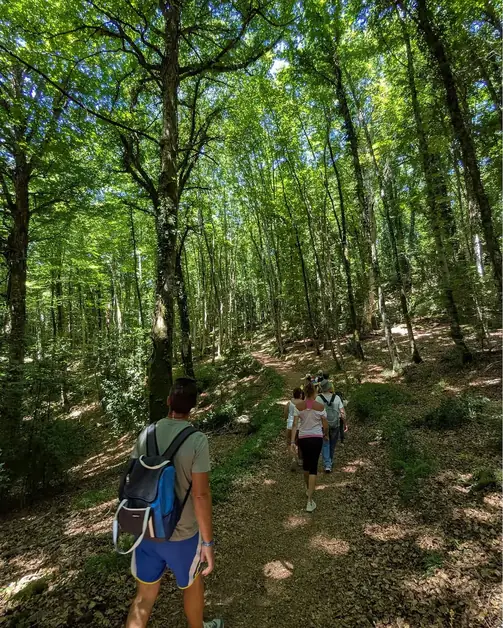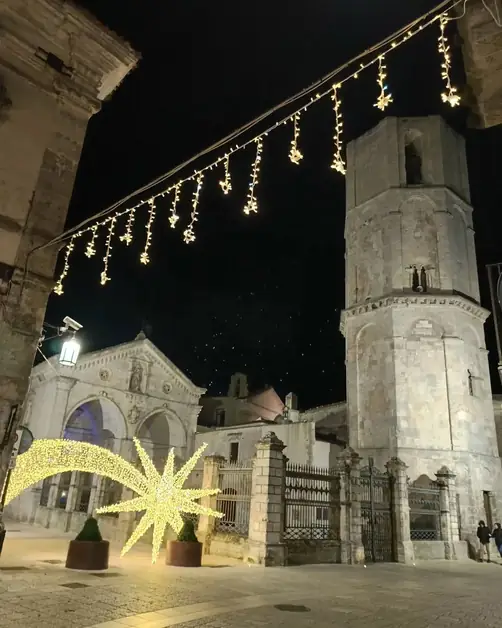The Via Francigena of the South and Monte Sant'Angelo
Monte Sant'Angelo is a fundamental stop on the Via Francigena of the South.

What is the Via Francigena of the South and why does it pass through Monte Sant'Angelo?
The Via Francigena of the South is an ancient pilgrimage route that connects Rome to the main ports of Southern Italy, from which travelers departed for the Holy Land. Monte Sant'Angelo represents one of the most important stops on this itinerary, thanks to the presence of the famous Sanctuary of Saint Michael the Archangel, a place of worship and spiritual destination since the Middle Ages.
Why is Monte Sant'Angelo a fundamental stop on the Via Francigena of the South?
Monte Sant'Angelo is one of the oldest and most significant final destinations of the Via Francigena of the South. Pilgrims arriving here did so to pray in the cave dedicated to Archangel Michael, considered the protector of travelers. This place, recognized as a UNESCO World Heritage Site, has always been a reference point for those walking spiritual paths towards Puglia.
Where does the Via Francigena of the South start and where does it lead?
The route starts in Rome and crosses regions such as Lazio, Campania, and Puglia. From Monte Sant'Angelo, pilgrims continued towards the ports of Brindisi or Otranto, where they boarded to reach the Holy Land. Today, the Via Francigena of the South is traveled not only by believers but also by trekking enthusiasts and slow tourism.
How can you recognize the route of the Via Francigena of the South in Monte Sant'Angelo?
The route is marked by special white and red arrows and symbols depicting the pilgrim's shell, similar to that of the Camino de Santiago. In the surroundings of the town, the trails cross woods, hills, and ancient mule tracks that were once traveled on foot or horseback. Hikers can also follow maps and GPS tracks to avoid getting lost.
What is the distance from Rome to Monte Sant'Angelo along the Via Francigena of the South?
The total distance is about 500 kilometers, a route that can be divided into stages of 15 to 25 kilometers per day. Monte Sant'Angelo is located almost at the end of the itinerary, in the heart of Gargano. Arriving here means completing one of the most spiritual and scenic sections of the entire route.
What can be found in Monte Sant'Angelo along the pilgrims' route?
In the village, there is the famous Sanctuary of Saint Michael the Archangel, a natural cave transformed into a place of worship. Pilgrims enter here to thank or seek protection from the Archangel. Next to the sanctuary are the Lapidary Museum, the Norman-Swabian Castle, and numerous minor churches that tell the religious history of the place.
What is the atmosphere like upon arriving in Monte Sant'Angelo after a long journey?
Those who walk the Via Francigena of the South report feeling a great emotion upon arrival. The village, with its white houses and narrow streets, welcomes pilgrims with an atmosphere of peace and spirituality. The view of the Gulf of Manfredonia and the feeling of having reached a sacred place make the experience unforgettable.
What services are available for pilgrims in Monte Sant'Angelo?
The town is well organized to welcome travelers. There are hostels, bed & breakfasts, restaurants, and information points. Many businesses display the symbol of the Via Francigena to indicate their availability to pilgrims. Some establishments also offer the official stamp to be affixed to the pilgrimage credential.
What are the previous stages to Monte Sant'Angelo along the Via Francigena of the South?
Among the main stages are Troia, Lucera, and San Severo. These villages hold Romanesque churches, ancient cobbled streets, and medieval remains that tell the story of pilgrimage towards Gargano. From San Severo, the route becomes more challenging but also more spectacular, with panoramic climbs and views of the sea.
What landscapes does the Via Francigena of the South cross before reaching Monte Sant'Angelo?
The path crosses very different environments: plains, hills, centuries-old olive groves, and woods of the Gargano National Park. Along the ascent to Monte Sant'Angelo, you also encounter caves, hermitages, and panoramic points overlooking the Adriatic Sea. Each stage offers different emotions, between nature, history, and faith.
Is it possible to walk only the final stretch of the Via Francigena of the South to Monte Sant'Angelo?
Yes, many travelers choose to walk only the last stages, starting for example from San Giovanni Rotondo or Manfredonia. This stretch lasts two or three days of walking and allows you to discover the beauty of Gargano and the spirituality of the sanctuary without tackling the entire route from Rome.
What can you visit in Monte Sant'Angelo after completing the journey?
In addition to the Sanctuary of Saint Michael the Archangel, it is worth visiting the Rione Junno, one of the oldest and most characteristic neighborhoods of the town, with its white houses and narrow alleys. Also interesting is the Museum of Arts and Popular Traditions of Gargano, which tells the daily life of the past. There are also panoramic points from which to admire the sea.
What is the best time to walk the Via Francigena of the South to Monte Sant'Angelo?
The ideal period is spring or autumn when temperatures are mild and the landscapes of Gargano show beautiful colors. Summer can be hot, especially in the flat areas, while in winter some sections may be more difficult to traverse due to cold and rain.
Is it possible to obtain the credential and the testimonium in Monte Sant'Angelo?
Yes, pilgrims can obtain the final stamp and the certificate of pilgrimage, called testimonium, directly at the Sanctuary of Saint Michael the Archangel. It is a symbolic memento that attests to the arrival at the destination and represents the completion of the spiritual journey.
What does it mean to walk to Monte Sant'Angelo along the Via Francigena of the South?
It means experiencing a deep connection with nature and oneself. Each step represents a moment of reflection, and every encounter along the way is an enrichment. Arriving at the cave of Saint Michael means not only reaching a geographical destination but also a spiritual one.
Are there events dedicated to pilgrims along the Via Francigena of the South in Monte Sant'Angelo?
Throughout the year, various religious and cultural events related to the journey are organized. In particular, on September 29, the day dedicated to Saint Michael, processions and celebrations take place that attract pilgrims from all over Europe. It is a moment of celebration and spirituality that involves the whole town.
Why is Monte Sant'Angelo an unmissable destination for those who love spiritual paths?
Because it combines history, faith, and nature in one place. Here you can breathe the authenticity of ancient paths and the strength of spirituality that has crossed the centuries. Walking to Monte Sant'Angelo along the Via Francigena of the South means rediscovering the value of slow travel, encounter, and contemplation.




